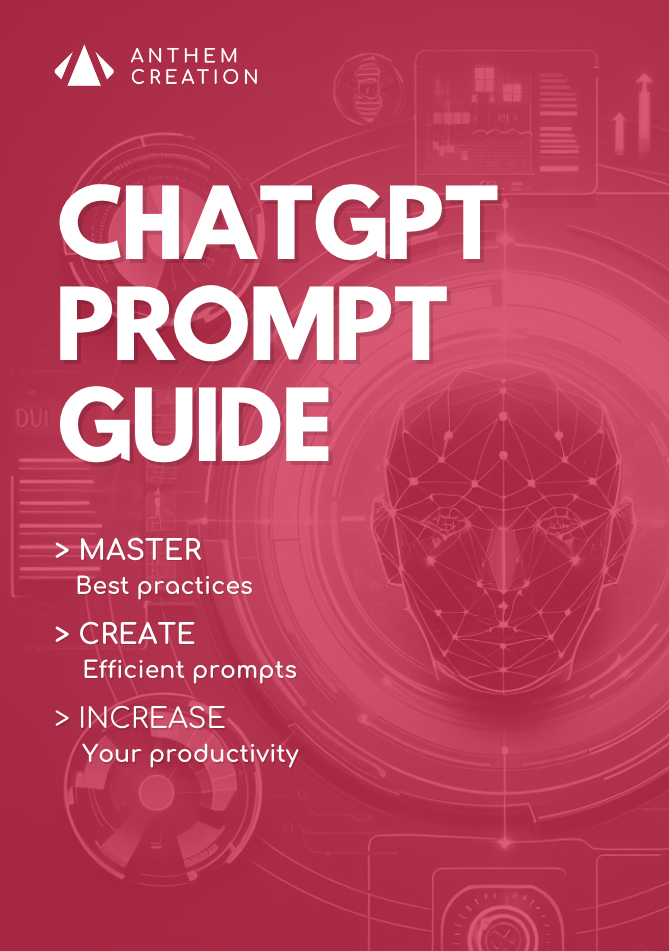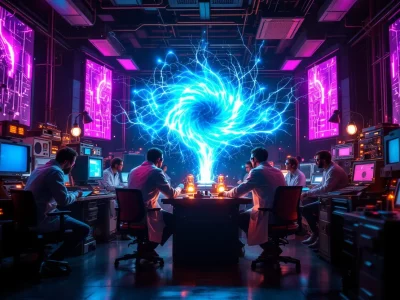How do you choose the model best suited to your specific needs? Between performance, cost and specialized features, this guide presents an in-depth analysis of the best ChatGPT models available to help you make the optimal choice for your projects.
We’ll take a detailed look at the features, strengths and weaknesses of the GPT-4o, GPT-4.1, GPT-4.5 models, as well as the new o3 and o4 series, to guide you towards the solution that will maximize your productivity while optimizing your investments.

The ecosystem of the best ChatGPT models in 2025
The OpenAI artificial intelligence model landscape has grown considerably in 2025, with several families of models coexisting to meet different needs.
Each generation brings its own specific innovations, creating a rich ecosystem but one that is sometimes difficult for users to grasp.
The GPT-4o family: Accessible multimodal intelligence
GPT-4o represents a major evolution in the multimodal approach to artificial intelligence.
This model is distinguished primarily by its ability to process different types of data simultaneously, going far beyond the simple textual interactions of its predecessors.
It particularly excels in the integration and analysis of audio and visual content, enabling it to offer more comprehensive and contextualized answers.
Its responsiveness, combined with its ability to handle multiple forms of media simultaneously, makes it particularly well-suited to applications requiring a rich, nuanced understanding of content.
This makes every interaction more natural and personalized, creating a dramatically enhanced user experience.
His sophisticated algorithm enables him to generate highly contextual responses, making exchanges more fluid and relevant.
This increased accuracy is the result of learning from a massive data corpus and particularly advanced deep learning techniques.
GPT-4o mini, meanwhile, offers a more economical alternative while retaining much of its big brother’s capabilities.
This lighter version nevertheless remains powerful for the majority of common uses, making it an interesting option for projects with budget constraints.
Discover our GPT-4o / 4o-mini comparison: Comparative between GPT-4o and GPT-4o-mini: Which AI model to choose?
The GPT-4.1 family: expertise in coding and context understanding
Launched on April 14, 2025, the GPT-4.1 family comprises three distinct models: GPT-4.1, GPT-4.1 mini and GPT-4.1 nano.
These models stand out for their outstanding performance in coding and instruction tracking, as well as their ability to understand extremely wide contexts.
The standard GPT-4.1 model is the most comprehensive version of this family.
He particularly excels at understanding complex contexts and performing advanced tasks.
Its ability to process up to one million tokens (about 750,000 words) in a single query makes it ideal for projects requiring the analysis of large documents or the management of long and detailed conversations.
The mini version offers an excellent cost-effective compromise, being 83% less expensive than GPT-4o while maintaining outstanding performance.
This option is particularly recommended for the development of high-performance AI tools on a controlled budget.
Finally, GPT-4.1 nano is positioned as the ultra-fast and economical solution in the range, specially designed for simple tasks requiring high-frequency processing, such as classification or autocompletion.
This model is particularly suited to applications requiring low latency on a large scale.
According to OpenAI’s statements,all of these models outperform GPT-4o and GPT-4o mini in every way, with particularly significant gains in terms of coding and instruction tracking.
GPT-4.5: the premium model with extended capabilities
Launched at the end of February 2025, GPT-4.5 represents OpenAI’s most advanced model to date.
It features significant improvements in overall performance and user interaction quality.
This model places particular emphasis on two fundamental aspects: significantly enhanced contextual understanding and enhanced emotional intelligence.
These characteristics enable him to grasp the subtlest nuances in exchanges and adapt his responses accordingly.
However, this excellence comes at a cost. GPT-4.5 is extremely expensive to operate, and this is reflected in its pricing.
Currently available in pre-release for ChatGPT subscribers with Pro driver’s licenses paying $200 monthlys, it will be gradually rolled out to ChatGPT Plus and Team subscribers.
It’s important to note that GPT-4.5 was not designed to replace GPT-4o, but rather to coexist with it by offering complementary capabilities.
While GPT-4o remains the best ChatGPT model for most common applications, GPT-4.5 stands out for its advanced specific capabilities, especially in file and image analysis.
“o” models: the future of AI thinking
OpenAI has recently enhanced its range with three revolutionary new models: o3, o4-mini and o4-mini-high.
These models represent a major conceptual advance, characterized by their ability to mimic the human thought process.
The o3 model, initially announced in December 2024 and then temporarily abandoned in February 2025, has finally been integrated into ChatGPT.
Its particularity lies in its iterative approach: rather than generating an immediate response, it proceeds in successive stages of reflection before formulating its final conclusion, in the image of human reasoning.
This methodology is similar to that already explored by its predecessor o1 and its competitor DeepSeek-R1.
One of the areas in which o3 particularly excels is complex image analysis. Thanks to its ability to iterate and focus on specific details, it achieves a much deeper and more nuanced understanding of illustrations and diagrams.
This methodical approach enables him to grasp the whole from a minute analysis of the components.
The o4-mini and o4-mini-high models follow this same logic of step-by-step reasoning, but have been optimized to reduce their energy consumption, thus offering a more ecological and economical alternative.
A considerable advantage of these new models lies in their complete integration with existing ChatGPT functionalities, previously inaccessible to models with multiple iteration points.
They can now perform web searches, execute Python code, generate images and many other advanced functions.
As for the o3-mini, launched in February 2025, it presents itself as a fast, low-cost alternative to o3, significantly reducing costs while preserving impressive computing power.
This model is a particularly attractive option for researchers, developers and companies looking for optimized, cost-effective AI.
Comparative analysis of performance and capabilities
To make it easier for you to choose from this wide range of models, let’s take a look at their respective performances according to different evaluation criteria.
Price and performance comparison table
| Model | Relative cost | Processing speed | Context capability | Multimodality | Main strengths |
|---|---|---|---|---|---|
| GPT-4o | Reference ($2.50/1M tokens in, 10$/1M tokens output) | High | Good | Excellent | Audio/visual processing, real-time interactions |
| GPT-4o mini | Lower than GPT-4o | Very high | Moderate | Good | value | GPT-4.1 | 26% cheaper than GPT-4o | High | Excellent (1M tokens) | Very good | Coding, follow precise instructions |
| GPT-4.1 mini | 83% cheaper than GPT-4o | Very high | Good | Good | Cost-optimized development |
| GPT-4.1 nano | Most economical in its family | Ultra fast | Limited | Limited | Classification, autocompletion, low latency |
| GPT-4.5 | Premium ($75/1M words in, $150/1M words out) | Moderate | Excellent | Superior | Contextual understanding, emotional intelligence |
| o3 | High | Moderate (iterative thinking) | Excellent | Excellent | Complex problem solving, image analysis |
| o3-mini | Moderate | 24% faster | Good | Good | 63% cheaper, good performance/cost balance |
| o4-mini | Moderate | High | Very good | Energy-efficient iterative reflection | |
| o4-mini-high | Moderate-High | Good | Excellent | Excellent | Improved version of o4-mini with superior performance |
Table of recommended use cases
| Model | Ideal for | Less suitable for |
|---|---|---|
| GPT-4o | Creation of multimedia content, real-time interactive applications | Very low-budget projects |
| GPT-4o mini | Consumer applications, simple chatbots | Analysis of complex or very long documents |
| GPT-4.1 | Advanced software development, analysis of large documents | Applications requiring instant response |
| GPT-4.1 mini | Development tools, startups with limited budgets | Tasks requiring maximum performance |
| GPT-4.1 nano | Large-scale classification, autocompletion | Complex seasoning, creative generation |
| GPT-4.5 | Sophisticated analysis, premium projects with high requirements | Large-scale consumer services (prohibitively expensive) |
| o3 | Scientific research, complex problem solving, detailed image analysis | Simple tasks not requiring in-depth thinking |
| o3-mini | Projects requiring structured thinking at controlled cost | Applications requiring minimal latency |
| o4-mini | Environmentally-friendly applications, efficient batch processing | Instant generation |
| o4-mini-high | Hybrid projects requiring thought and performance | Very basic applications (overqualified) |
Selection guide by industry
For content and media creators
If you’re in the content creation business, your choice will depend mainly on the complexity and multimedia nature of your projects.
For the generation of standard text content such as blog posts, newsletters or product descriptions, GPT-4.1 mini offers excellent value for money, being 83% cheaper than GPT-4o while maintaining outstanding copywriting performance.
On the other hand, if you’re working on multimedia content requiring the analysis or generation of visual and audio elements, GPT-4o becomes indispensable thanks to its advanced multimodal processing capabilities. For the most ambitious projects requiring a particularly fine understanding of nuance and emotion, such as creative writing or elaborate storytelling, GPT-4.5 represents the premium option, although its high cost requires prior budgetary consideration.
For developers and engineers
Software development professionals will particularly benefit from the advances of the GPT-4.1 family, specifically optimized for coding tasks.
For front-end development and projects requiring strict adherence to response formats, structures and order, GPT-4.1 standard represents the ideal solution.
Its ability to process up to one million tokens also allows it to analyze large code bases in a single query.
For everyday development tasks and the creation of software agents, GPT-4.1 mini offers an excellent compromise, allowing costs to be optimized without significantly sacrificing performance.
Finally, for code autocompletion functions and simple high-frequency tasks, GPT-4.1 nano is the most cost-effective and rapid option, particularly suited to integrated development environments.
For education and research
The education and research sector presents specific needs for in-depth analysis and step-by-step reasoning.
For the analysis of scientific documents, diagrams and maps, GPT-4.1 demonstrates superior accuracy, making it particularly suitable for educational and scientific applications.
However, for problems requiring step-by-step reasoning and a methodical approach, the “o” series models present an undeniable advantage.
The o3 model excels at complex problem solving thanks to its ability to mimic the human thought process, while o3-mini offers a more economical alternative while preserving much of these capabilities.
For corporate and customer services
Enterprise and customer service applications generally require a balance between performance, cost and responsiveness.
For chatbots and virtual assistants intended for a wide audience, GPT-4o mini or GPT-4.1 nano offer the optimal combination of responsiveness and controlled cost, essential for large-scale deployments.
For premium services requiring a nuanced understanding of customer demands, such as financial or legal advice, GPT-4.5 with its enhanced emotional intelligence and superior contextual understanding represents the ideal option, despite its higher cost.
Finally,for applications requiring in-depth analysis of customer documents or images (medical sector, insurance), the o3 or o4-mini-high models offer the best performance thanks to their iterative approach and excellent visual analysis capability.
Cost optimization and practical tips
One of the major challenges when choosing an AI model is optimizing the cost-performance ratio. Here are some practical tips for maximizing your investment.
Cost reduction strategies
GPT-4.1 standard is 26% cheaper than GPT-4o on conventional queries, representing substantial savings for high-volume projects.
For applications requiring intensive use but not demanding maximum performance, GPT-4.1 mini offers an even more impressive cost reduction, being 83% cheaper than GPT-4o.
Another effective strategy is to implement caching of prompts, enabling up to 75% cost reduction on repeated requests.
This approach is particularly relevant for applications that frequently use similar instructions.
Hybrid approach
A particularly effective strategy is to adopt a hybrid approach, using different templates depending on the nature of the tasks.
For example, you could use GPT-4.1 nano for simple classifications and autocompletion, GPT-4o for multimodal interactions, and only call on GPT-4.5 or o3 for tasks that really require their advanced capabilities.
This intelligent segmentation considerably optimizes costs while maintaining optimal performance for each type of use.
Making the informed choice for 2025
OpenAI’s ecosystem of AI models in 2025 offers unprecedented richness and diversity, enabling fine-tuning according to the specific needs of each project.
The choice of the ideal model depends not only on raw performance, but on a subtle balance between technical capabilities, project requirements, and budget constraints.
For general-purpose applications requiring good versatility, GPT-4o remains a solid choice.
Development professionals will find the GPT-4.1 family of tools particularly suited to their needs.
Premium projects requiring maximum performance will be able to justify investment in GPT-4.5, while applications requiring step-by-step reasoning will particularly benefit from the “o” series models.
The success of your projects in 2025 will depend not only on your choice of the best ChatGPT model, but also on your ability to fully exploit its specific functionalities and integrate it effectively into your technical and organizational ecosystem.
AI NEWSLETTER
Stay on top of AI with our Newsletter
Every month, AI news and our latest articles, delivered straight to your inbox.

CHATGPT prompt guide (EDITION 2024)
Download our free PDF guide to crafting effective prompts with ChatGPT.
Designed for beginners, it provides you with the knowledge needed to structure your prompts and boost your productivity
With this ebook, you will:
✔ Master Best Practices
Understand how to structure your queries to get clear and precise answers.
✔ Create Effective Prompts
The rules for formulating your questions to receive the best possible responses.
✔ Boost Your Productivity
Simplify your daily tasks by leveraging ChatGPT’s features.
Similar posts
5 best AI trends in 2025 : prepare for change
Artificial intelligence is no longer just progressing – it’s fundamentally redefining our society. In 2025, we will reach a decisive milestone where AI will become deeply integrated into every aspect …
Creating an AI agent in 2025: Which solutions to explore?
The AI agent revolution is in full swing in 2025, offering enthusiasts and professionals alike a multitude of options for building autonomous intelligent assistants. This guide presents an overview of …
How to choose the best version of ChatGPT for your projects?
GPT-4o, GPT-o1, GPT Canvas… Not easy to find your way around all these versions of ChatGPT. Each model has its strengths, its particularities, and it’s not always easy to know …


